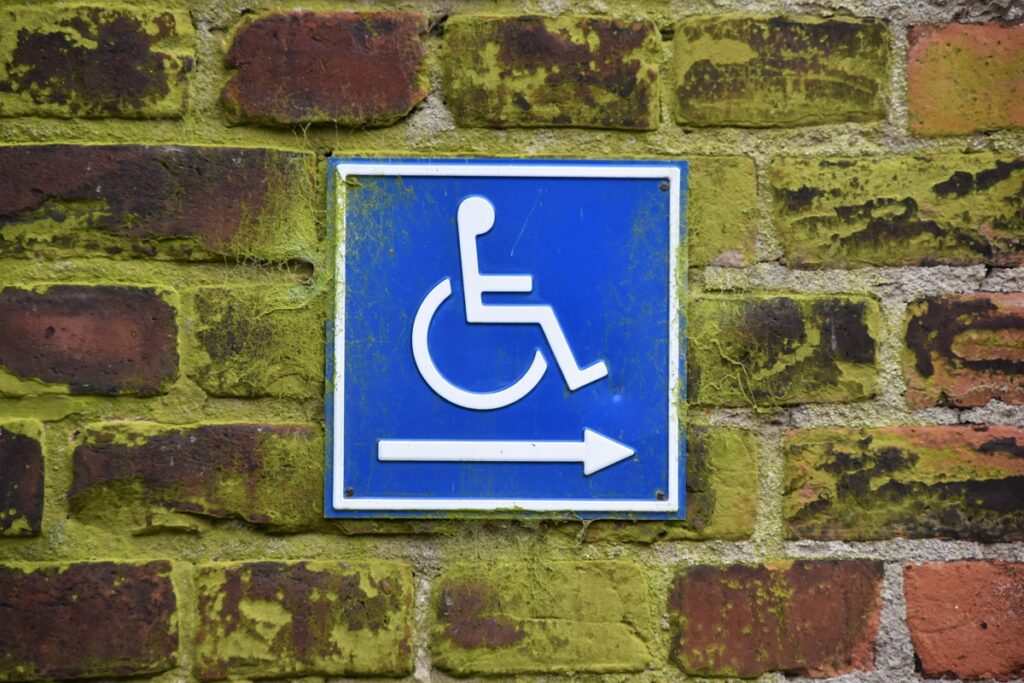If you’ve already gone through the process of applying for a handicap parking permit, you’ll most likely want to make sure you’re always parking in the appropriate spaces that are designated for people with disabilities. However, it can be a little confusing to tell which spots are okay for your usage (especially if you don’t require an assistive device).
In fact, depending on your location, if you’re not using a wheelchair, you might not be allowed to park in some spaces. There’s also the question of which states have wheelchair-only disabled parking spaces. To clear up any confusion, keep reading for more information.
What are wheelchair-only disabled parking spaces?
In some cities or jurisdictions in the US, you might discover parking places that have signs posted to indicate that they are designated for disabled individuals who require the use of a wheelchair. The signs might say, “For wheelchair users only,” or something similar to that effect.
Standard disabled parking places have a sign to mark them, as well as level groundwork for steady wheelchair paths and at least a 60-inch aisle next to the parking space to allow a wheelchair to negotiate around. These spaces give wheelchair users (and other people with assistive devices) enough room to easily enter and exit their vehicles.
If a person uses a wheelchair-accessible van, there are sometimes places designated specifically for their use. These spaces are typically much larger than standard spaces, so that a person can utilize a wheelchair lift or ramp if necessary. There are usually fewer of these types of parking places in a parking lot because they do take up more space.

What do wheelchair-only disabled parking spaces look like?
As noted above, there may be signs posted indicating that a parking space is for wheelchair users only. These spaces are usually painted in blue and white and have the International Symbol of Access, which is a wheelchair. There are also spaces designed for wheelchair-accessible vans that typically have a white-striped access aisle on the passenger side and are around 96 inches wide (so that entries and exits are easier on the right side). These spots are marked with signs that say “van accessible.”
In addition to these spaces, there are two-sided-entry parking spaces, which look similar to the other wheelchair-accessible van parking spots. These usually have access aisles on both sides of the parking place for the maximum amount of space around the vehicle.
In which states do wheelchair-only disabled parking spaces exist?
Because of the Americans with Disabilities Act (ADA), parking lots open to the public must have a certain amount of disabled parking spaces available for disabled drivers and passengers. Because of this legislation, every state must offer accessible parking.
As for specific wheelchair-only spaces, these can vary even between cities, as they can be set up by a city ordinance. The good thing is that you can travel pretty much anywhere in the US and find disabled parking options.
Do you need a special placard to park in wheelchair-only parking spaces?
At this time, you don’t need a special placard to park in wheelchair-only parking places. In most areas, the spaces are based on more of an honor system. If you don’t require the use of a wheelchair, be courteous and don’t park in these spots if another handicap-accessible spot is available. The same goes for wheelchair van-accessible parking places; try not to park in these spots if you don’t need them.
However, if you’re in a parking lot where all of the other handicap-accessible parking spots are taken, you are permitted to park there. It’s all about making sure you’re leaving parking places available for the folks who need them. If you’re one of those folks, then you don’t have anything to worry about!

How can you apply for a parking permit if you don’t have one yet?
If you don’t have a handicap parking permit yet, the application process is fairly straightforward. You’ll need help completing your application from your physician. They’ll need to fill out a medical certification indicating that you do have a physical disability that affects your mobility in some way, and that you can benefit from closer, more accessible parking places. There are a variety of medical conditions that qualify, and you definitely don’t have to be in a wheelchair to merit a handicap permit. You can also consult with a qualified medical professional online.
Your finished application will be submitted to your state’s Department of Motor Vehicles (DMV) and then approved based on the information you’ve supplied. With your placard in hand, you’ll have access to more convenient parking places that can help make your life a little easier. Pay attention to local laws in your area – some cities offer bonus perks like free parking at on-street metered parking for handicap placard holders. And always make sure to adhere to any signs that are posted so that you’ll steer clear of parking tickets.
If you require the use of a wheelchair and want to take advantage of wheelchair-only handicap parking spaces, make sure to apply for a disabled parking permit right away.
Featured image by Waldemar Brandt on Unsplash
